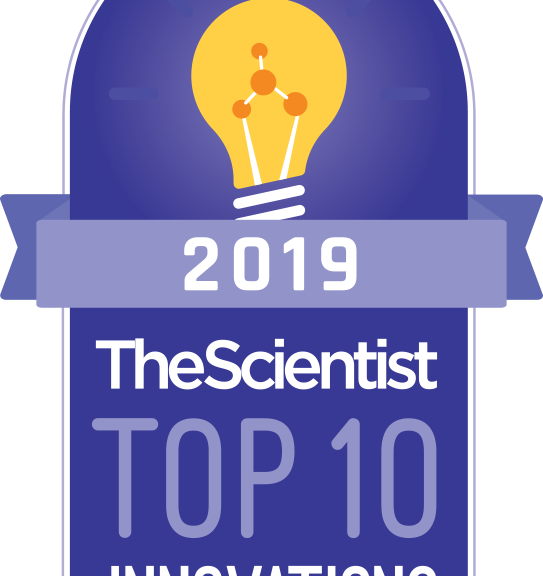
The Scientist Top 10 2019 Innovations
NEW YORK (PRWEB)
December 01, 2019
Each year The Scientist strives to identify the latest and greatest tools, technologies, and techniques to hit the life-science landscape. For more than a decade, our expert panels of independent judges have weighed submissions of innovative products speeding work in laboratories and facilitating biological discovery. This year’s crop of entries to The Scientist’s Top 10 Innovations contest reaffirmed that the pace of technological advancement in biology shows no signs of slowing. “In 2019, not only do we highlight products that build on established methods as the year’s Top 10 Innovations, we celebrate unique contributions that break new conceptual ground in life science,” says Editor-in-Chief Bob Grant. “For example, the latest long-read sequencer and a freshly tweaked CRISPR reagent take their place on the list along with a mass photometry device and an optofluidic platform.”
The winners of The Scientist’s Top 10 Innovations of 2019 contest are:
1) Refeyn One (Refeyn) – This mass photometry device measures the weight of single molecules by the way they scatter light, facilitating rapid sample analysis.
2) Janus Bases (NeuBase) – Company researchers are using Janus bases to develop short oligonucleotide drugs that are highly target-specific.
3) Lightning optofluidic platform (Berkeley Lights) – The Lightning optofluidic platform enables researchers to study the behaviors of single cells within a defined time period by recording video of them throughout the data collection process.
4) Sequel II (PacBio) – This technology, the latest incarnation of a sequencer that previously won a spot in the Top 10 Innovations, generates about eight times as much data as its predecessor.
5) CX-A (Nanolive) – The CX-A is an automated, non-invasive live-cell imaging microscope that reconstructs three-dimensional images of cells and cellular organelles based on how they refract light in 96-well plates.
6) FreeStyle Libre 2 (Abbott) – This glucose monitoring system frees people with diabetes from finger sticks by delivering glucose values from a sensor worn on the back of the upper arm to a reader or compatible smartphone.
7) Codex System (Akoya Biosciences) – The Codex System is a multiplexed antibody detection system that can identify the locations of up to 40 different markers in a single sample.
8) Exogenous VOC (EVOC) Probes (Owlstone Medical) – These probes have the potential to provide a quick screening tool in the health-care field and to facilitate noninvasive studies in several research areas, including liver health and disease.
9) Chromium Single Cell ATAC Solution (10X Genomics) – A droplet-based platform that allows single-cell interrogation of the chromatin using a method called ATAC-seq.
10) Edit-R all-in-one lentiviral sgRNA (Horizon Discovery) – This service provides researchers with off-the-shelf or bespoke guide RNAs packaged in plasmids or ready-to-use viral particles to conduct CRISPR genome editing in a range of species.
Congratulations to this year’s winners. Be sure to visit https://www.the-scientist.com/features/2019-top-10-innovations-66738 where you can read more about the products that earned top spots and see comments from our expert judges.
About The Scientist:
The Scientist is a publication for life-science professionals that is dedicated to covering a wide range of biological fields. The Scientist provides print and online coverage of the latest developments in the life sciences, including trends in research, new technology, news, business, and careers. It is read by leading researchers in industry and academia who value penetrating analyses and broad perspectives on life-science topics both within and beyond their areas of expertise. Written by prominent scientists and professional journalists, articles in The Scientist are concise, accurate, accessible, and entertaining.
Share article on social media or email:

